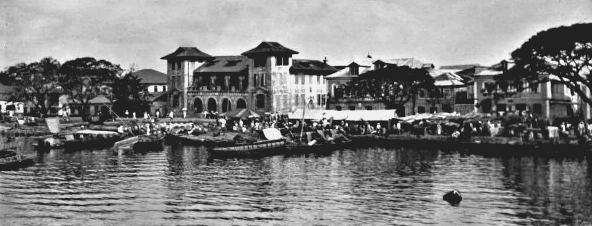Lagos strike of 1897

The Lagos strike of 1897 was a labour strike in Lagos Colony (modern-day Lagos in Nigeria) which has been described as the first "major labour protest of the colonial period" in African history.[1]
Lagos was one of the major ports in West Africa and was a busy entrepot through which trade between the coast and the interior was processed. The city's economy expanded widely during the 19th century.[2] At the time of the strike, Lagos was a colony under the governorship of Henry McCallum. McCallum, who had held a number of important colonial posts in Asia, decided to launch a major reform of the administration and economy of Lagos. Among these reforms was the driving down of wages paid to indigenous workers to increase the supply of labour.[3]
The reforms led to unrest among workers in the Public Works Department (PWD).[4] The final trigger for the strike was a decision to alter the working hours of employees of the PWD. The strike broke out on 9 August 1897 and involved nearly 3,000 workers.[5] The colony's police, the Public Force, experienced a minor mutiny on 10 August, meaning that McCallum was unable to repress the workers by force.[6] The strikers' demands were opposed by the indigenous, Europeanised middle-class.[7]
During negotiations with the strikers, McCallum made notable concessions. The planned pay reductions were abandoned, while the working hours reforms were tempered by the introduction of a lunch break.[6] The strikers returned to work and the strike is considered successful.[6]
References
- ↑ Hopkins 1966, p. 133.
- ↑ Hopkins 1966, pp. 134-5.
- ↑ Hopkins 1966, pp. 134-6.
- ↑ Hopkins 1966, p. 136.
- ↑ Hopkins 1966, pp. 136-7.
- 1 2 3 Hopkins 1966, p. 138.
- ↑ Davidson 1978, pp. 172-3.
Bibliography
- Davidson, Basil (1978). Let Freedom Come: Africa in Modern History. Ann Arbor: Little Brown.
- Hopkins, A. G. (1966). "The Lagos Strike of 1897: An Exploration in Nigerian Labour History". Past & Present (35): 133–155. JSTOR 649969.